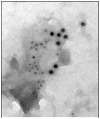Quantitative understanding of cell signaling: the importance of membrane organization
- PMID: 20829029
- PMCID: PMC2967365
- DOI: 10.1016/j.copbio.2010.08.006
Quantitative understanding of cell signaling: the importance of membrane organization
Abstract
Systems biology modeling of signal transduction pathways traditionally employs ordinary differential equations, deterministic models based on the assumptions of spatial homogeneity. However, this can be a poor approximation for certain aspects of signal transduction, especially its initial steps: the cell membrane exhibits significant spatial organization, with diffusion rates approximately two orders of magnitude slower than those in the cytosol. Thus, to unravel the complexities of signaling pathways, quantitative models must consider spatial organization as an important feature of cell signaling. Furthermore, spatial separation limits the number of molecules that can physically interact, requiring stochastic simulation methods that account for individual molecules. Herein, we discuss the need for mathematical models and experiments that appreciate the importance of spatial organization in the membrane.
Copyright © 2010 Elsevier Ltd. All rights reserved.
Figures



References
-
- Jacobson K, Dietrich C. Looking at lipid rafts? Trends Cell Biol. 1999;9:87–91. - PubMed
-
- Brown DA, London E. Structure and function of sphingolipid- and cholesterol-rich membrane rafts. J Biol Chem. 2000;275:17221–17224. - PubMed
-
- Edidin M. Shrinking patches and slippery rafts: scales of domains in the plasma membrane. Trends Cell Biol. 2001;11:492–496. - PubMed
-
- Anderson RG, Jacobson K. A role for lipid shells in targeting proteins to caveolae, rafts, and other lipid domains. Science. 2002;296:1821–1825. - PubMed
Publication types
MeSH terms
Grants and funding
LinkOut - more resources
Full Text Sources

